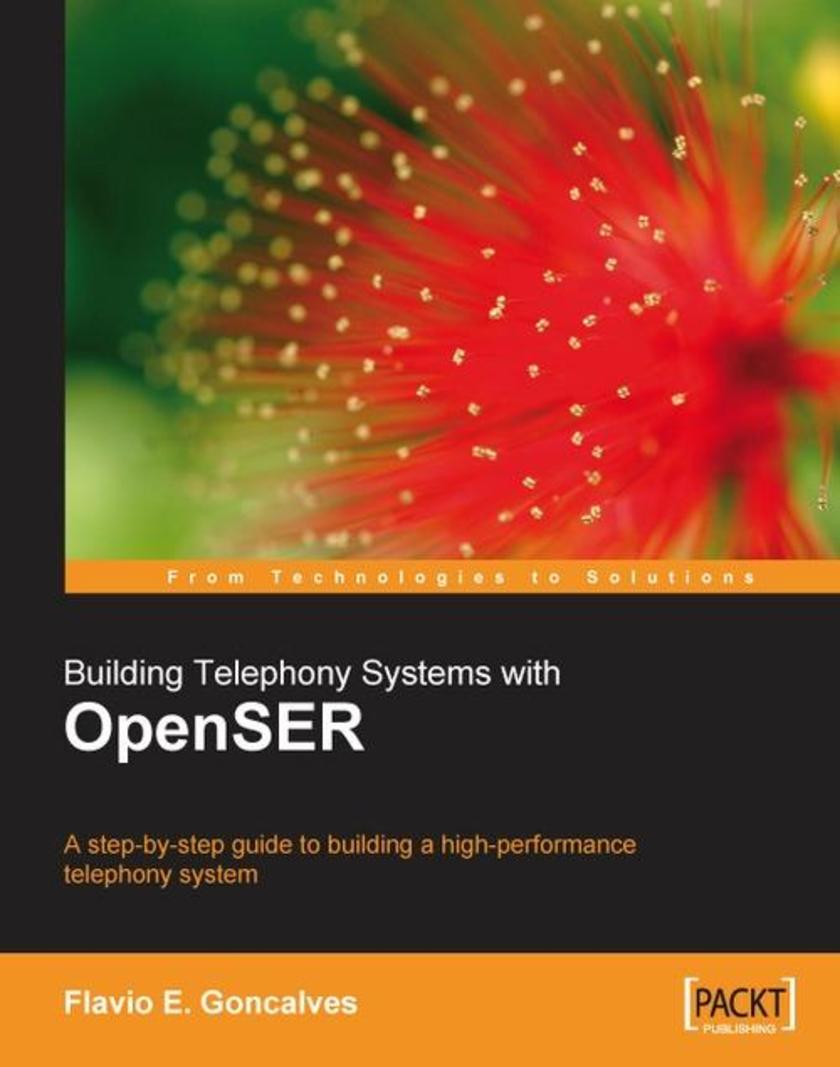
Building Telephony Systems with OpenSER
¥80.65
This book is a well illustrated, step-by-step guide to building a SIP based network using OpenSER. This book is for readers who want to understand how to build a SIP provider from scratch using OpenSER. Telephony and Linux experience will be helpful but is not essential. Readers need not have prior knowledge of OpenSER.
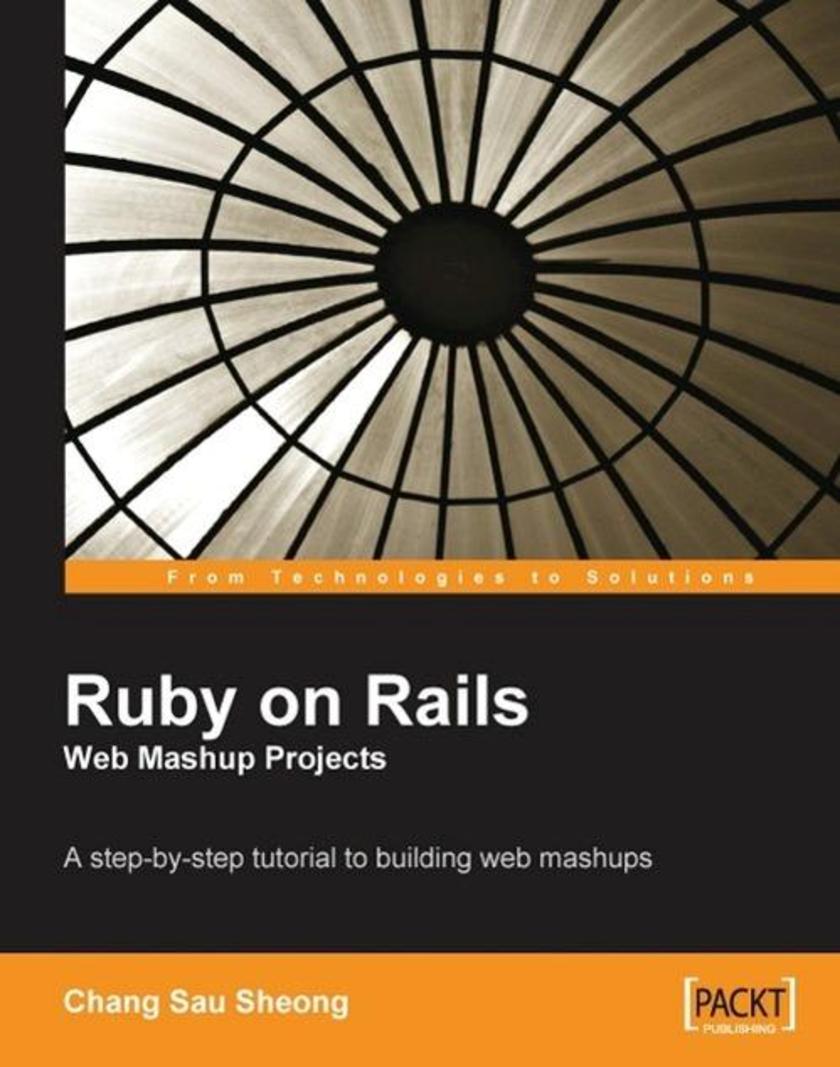
Ruby on Rails Web Mashup Projects
¥80.65
This book is project-based. The format of each project is similar, with a statement of the project, discussion of the main protocols involved, an overview of the API, and then complete code for building the project. You will be led methodically through concrete steps to build the mashup, with asides to explain the theory behind the code. This book is for Ruby on Rails developers who want to expand the features of their site by consuming remote external data and services. Basic knowledge of Ruby on Rails programming is required but you need not have any experience of any of the APIs used.
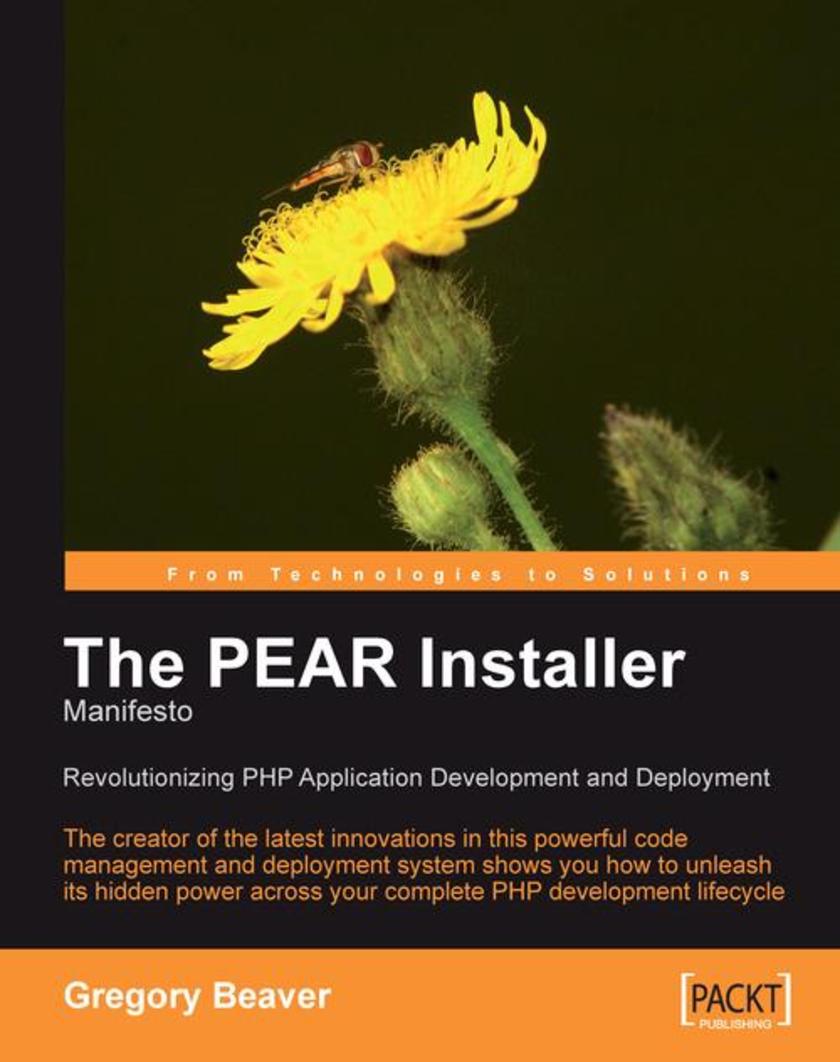
The PEAR Installer Manifesto
¥80.65
This book is a comprehensive and well structured tutorial on using PEAR Installer, but it is also much more than that. As the creator of the latest versions of the PEAR Installer (1.4.0+) , the author is passionate about the benefits of a well managed development and deployment process. The book shows how the PEAR Installer works in detail, and then takes you through a comprehensive tour of how you can apply it all stages of the development lifecycle, with practical examples and advice throughout. It will build your technical skills and understanding, and also widen your perspective on managing an effective development process. The book is not just for PHP developers who want to understand how the PEAR Installer works, and what it can do for them, but more generally for PHP developers seeking a better way to deploy their applications and manage updates. It does assume that you have a good working knowledge of PHP development, and are dealing with projects of a sufficient scale and complexity to warrant an investment in a structure process.
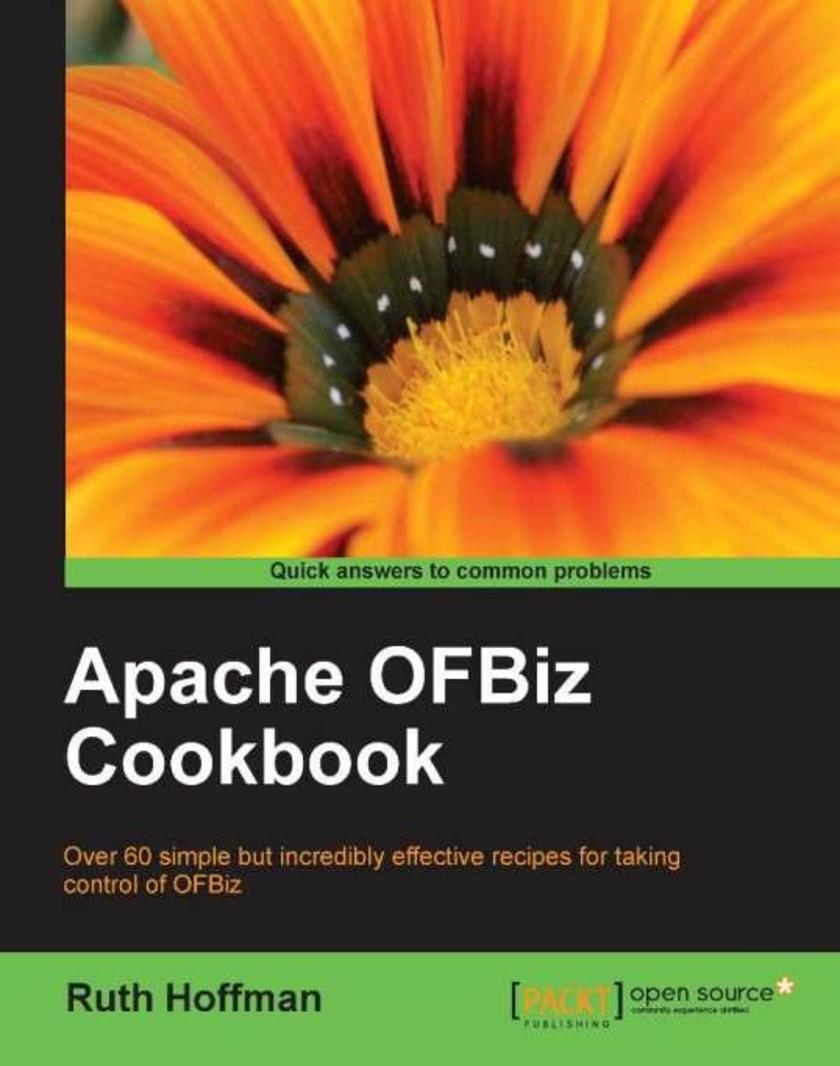
Apache OfBiz Cookbook
¥80.65
The best way to experience OFBiz is to dive right in and start "kicking the tires". No matter if you are an end user exploring the out-of-the-box e-commerce web store or a software developer getting ready to build a new application, you will find, eventually, that you perform the same tasks over and over again. This book is designed as a reference to guide you though those oft-encountered OFBiz tasks. It is a collection of recipes, not necessarily in any particular order of importance, that address and give answers to many of the real-world questions asked about how to do things with OFBiz. If you are an OFBiz user who has some familiarity with enterprise software systems, and perhaps more importantly, Internet and Web exposure, you will be able to glean useful information from this book. You will need only basic knowledge of modern browser behavior (for example: how to click a mouse button) to follow some recipes, while others assume a passing familiarity with a text-editor and XML documents. If you are a software developer looking for Java and/or Groovy examples, this book also includes a chapter on Java software development.
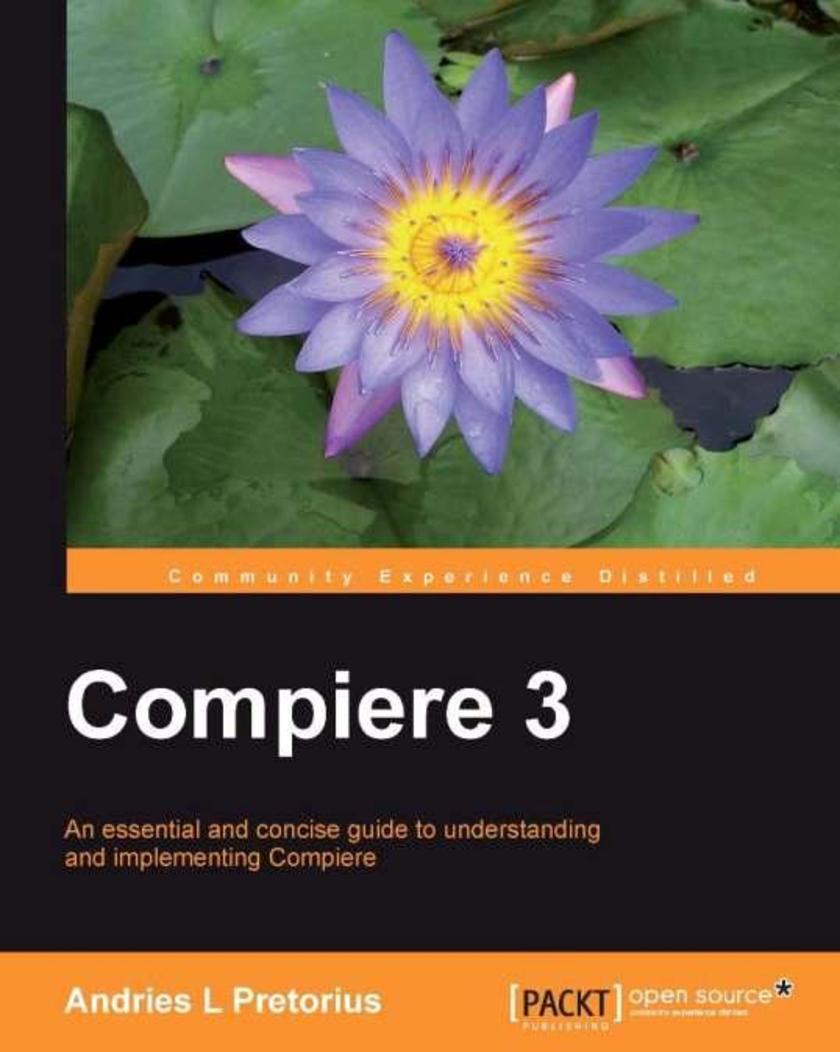
Compiere 3
¥80.65
This book is a concise guide that focuses solely on implementing Compiere. It uses a business scenario case study throughout to illustrate the sort of decisions and considerations required at critical stages in a real-life Compiere implementation. If you are considering or want to easily implement Compiere in your organization, this book is for you. This book will also be beneficial to system users and administrators who wish to implement an ERP system. No previous knowledge of Compiere is required.
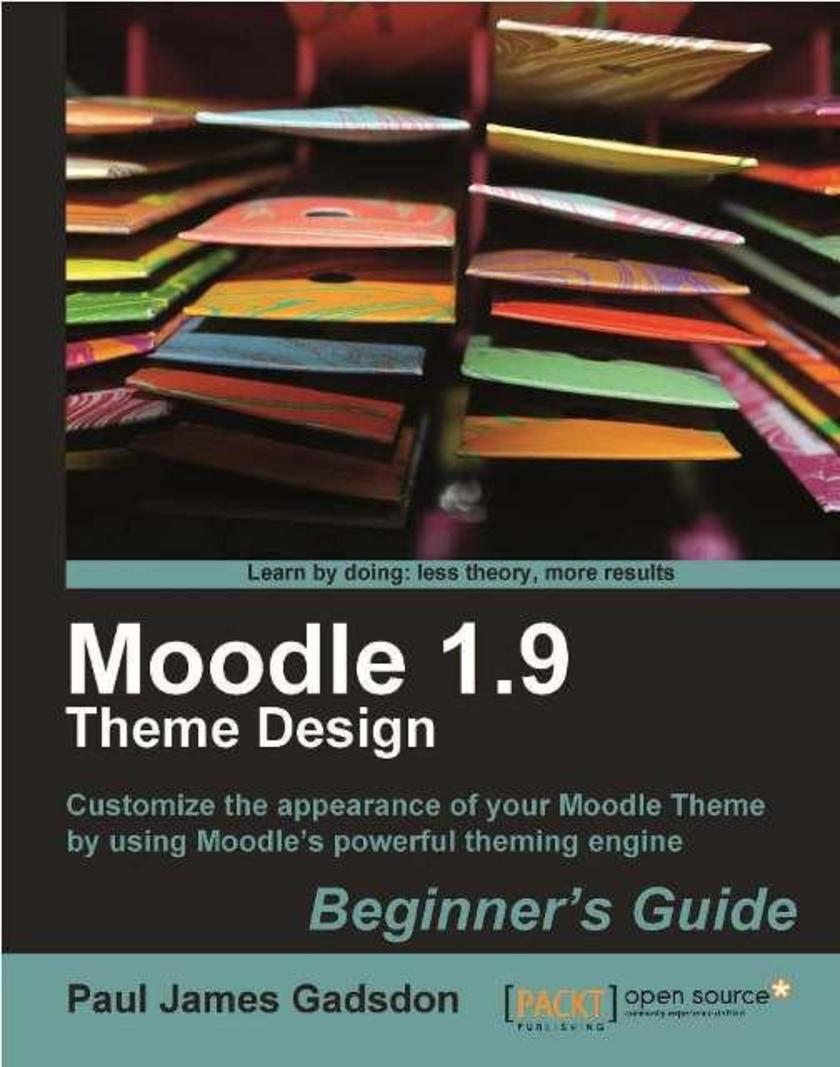
Moodle 1.9 Theme Design: Beginner's Guide
¥80.65
This is a Beginner's Guide, with plenty of worked examples, step-by-step visual guides, and explanations. If you are a Moodle administrator, ICT technical personnel, designer or a teacher and wish to enhance your Moodle site to make it visually attractive, then this book is for you. You should be familiar with the basics of Moodle operation, and some familiarity with web design techniques, such as HTML and CSS, will be helpful.
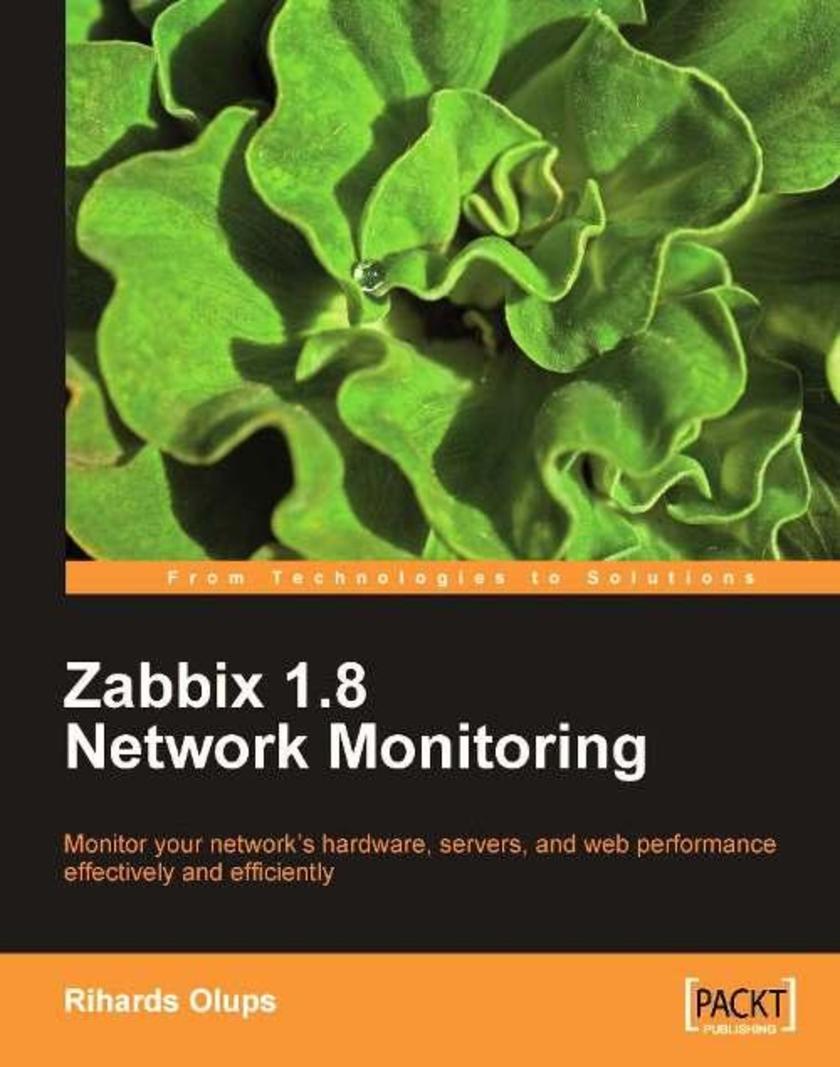
Zabbix 1.8 Network Monitoring
¥80.65
This is a hand-on step-by-step book in a tutorial style. All configuration steps that are required to reach goals are explained in detail that should leave no reader stuck. Exact commands are provided for setting up and testing the configuration and screenshots of the user interface allow you to be sure that you are using the correct interface section. The author's experience with Zabbix enables him to share insights on using Zabbix effectively, in a clear and friendly way. This book assumes no experience with Zabbix and minimal experience with Linux. Knowledge provided by this book, will be useful if: you are responsible for managing in-house IT infrastructure such as network hardware, servers, and web pages, you are responsible for managing non-IT infrastructure that provides data such as temperature, flow, and other readings, you have clients with strict accessibility requirements and want to monitor hardware that provides services to them, you are a system administrator who wants to monitor the network hardware, servers, and web performance
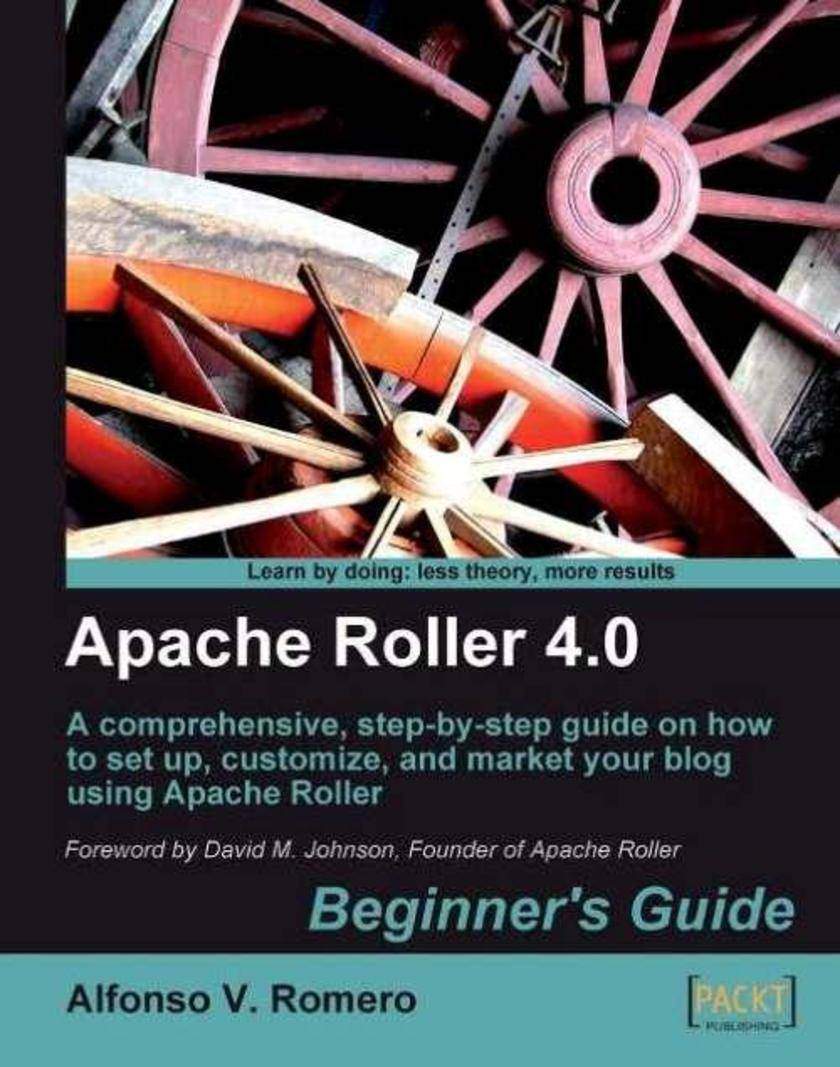
Apache Roller 4.0 – Beginner's Guide
¥80.65
This beginner's guide is packed with information, tips, and tricks, based on the author's extensive experience with Apache Roller. In next to no time, you will be able to build and deploy your own blog. The clear and concise hands-on exercises will teach you everything you need to know to install, configure, and use Apache Roller, along with the open source software required to run it. The book includes plenty of illustrations to guide you through all the detailed exercises and tutorials, so you can get the most out of every chapter. If you are interested in establishing a blog, using Apache Roller and popular web applications to write attractive posts and promote your blog on all the major social bookmarking services, this book is for you. No previous experience on Tomcat, MySQL, the Apache Web Server, or Linux is required.
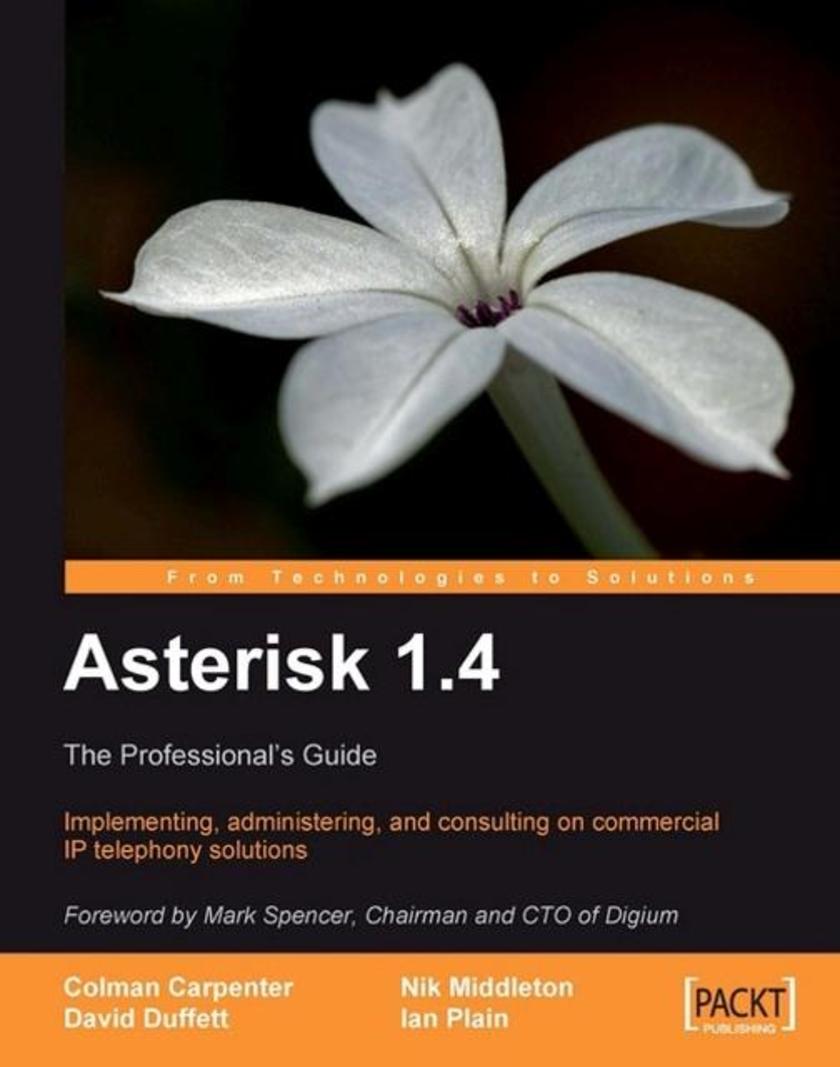
Asterisk 1.4 : The Professional’s Guide
¥80.65
Employing a comprehensive handbook-style approach, this easy-to-follow book shows the reader various means of implementing the power of Asterisk in a commercial environment. In next to no time, the reader will gain a deeper understanding of many of the issues faced by Asterisk consultants and the solutions they believe work best. Primarily aimed at Asterisk Professionals, this book provides real-world insight for Asterisk Network Administrators and System Implementers in the commercial environment. This book is not for newcomers to Asterisk. Readers are expected to be experienced with installing and administering Asterisk systems.
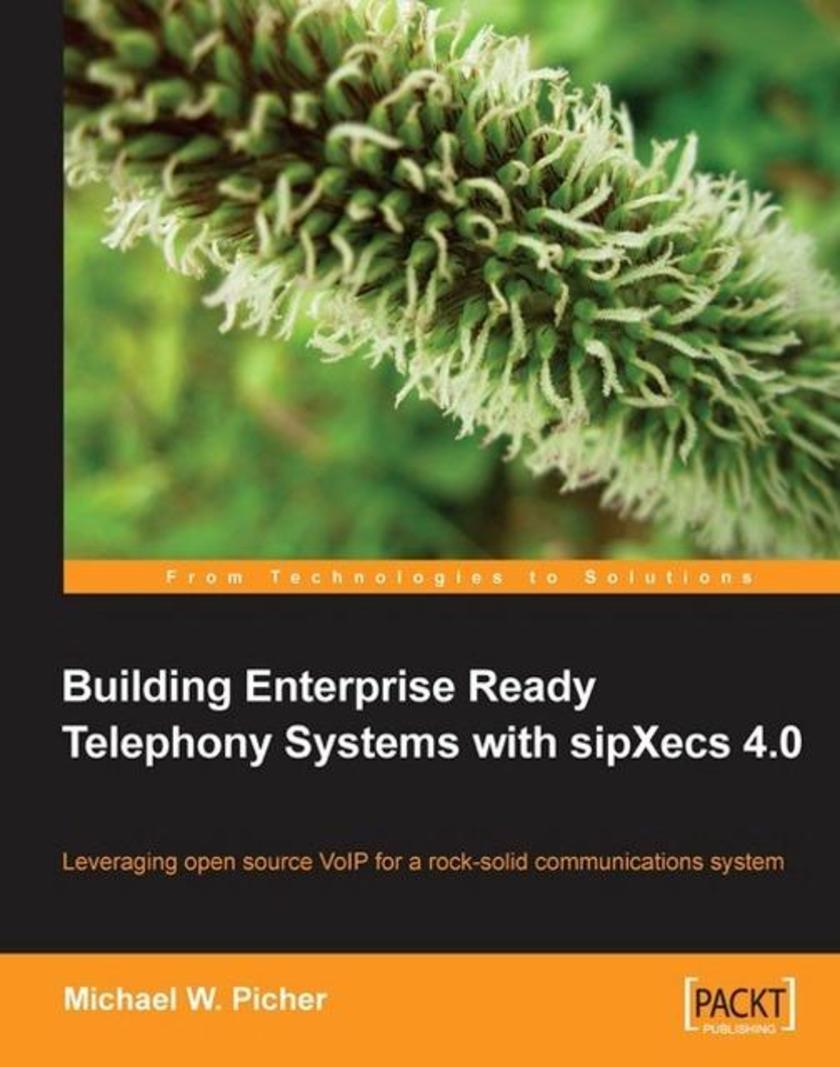
Building Enterprise Ready Telephony Systems with sipXecs 4.0
¥80.65
This book was written to be a step by step approach to building a communications system for any organization. Care was taken to clearly illustrate with diagrams and screen shots all of the steps and concepts along the way. This book is written for network engineers who have been asked to deploy and maintain communications systems for their organizations.
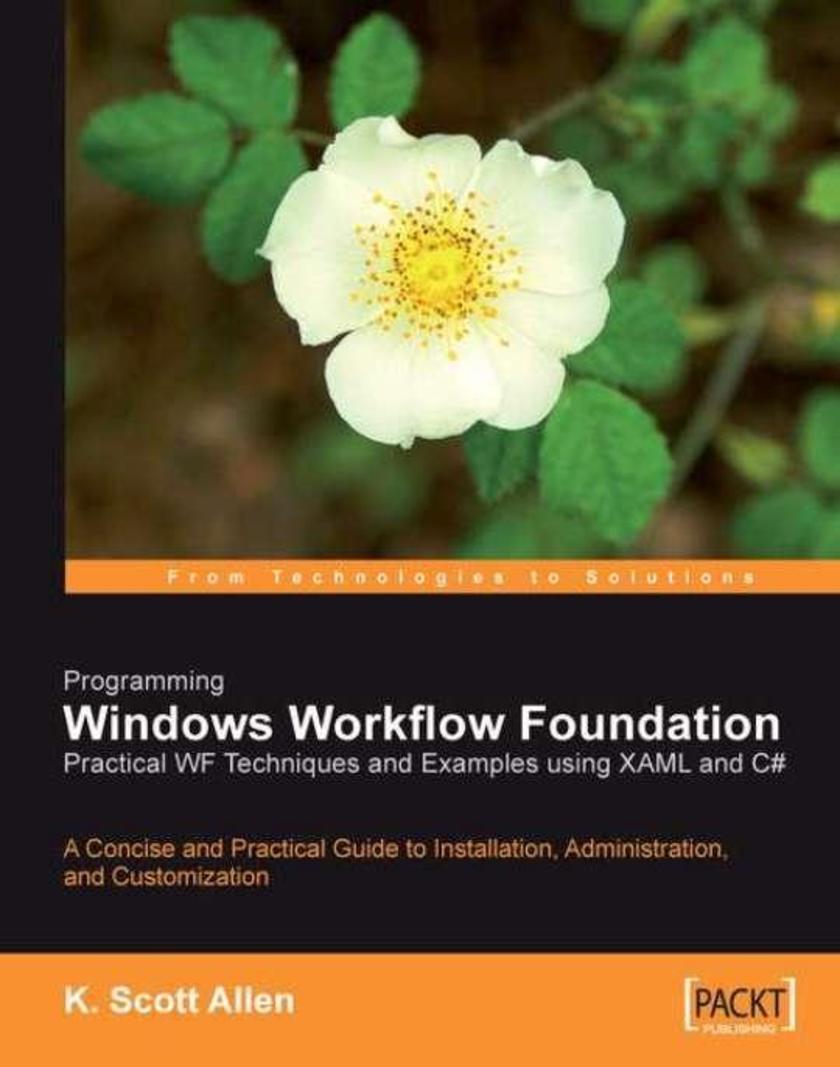
Programming Windows Workflow Foundation
¥80.65
Fast-paced and to-the-point, this book takes you through the important topics of Windows WF development with clear explanations and practical example code. The book's selection of topics is driven by what the working developer needs to know. It is neither a comprehensive reference to the whole WF architecture, nor a strategy guide to the complete application development lifecycle. It's just what you as a C# developer need to know to use WF in your applications. This book is for .NET developers who want to enhance their applications with flexible workflow capabilities using Microsoft Windows Workflow Foundation. The author assumes that you have read other texts on the overall architecture of WF and on WF application design strategies, and instead focuses on real-work implementation issues for C# developers.
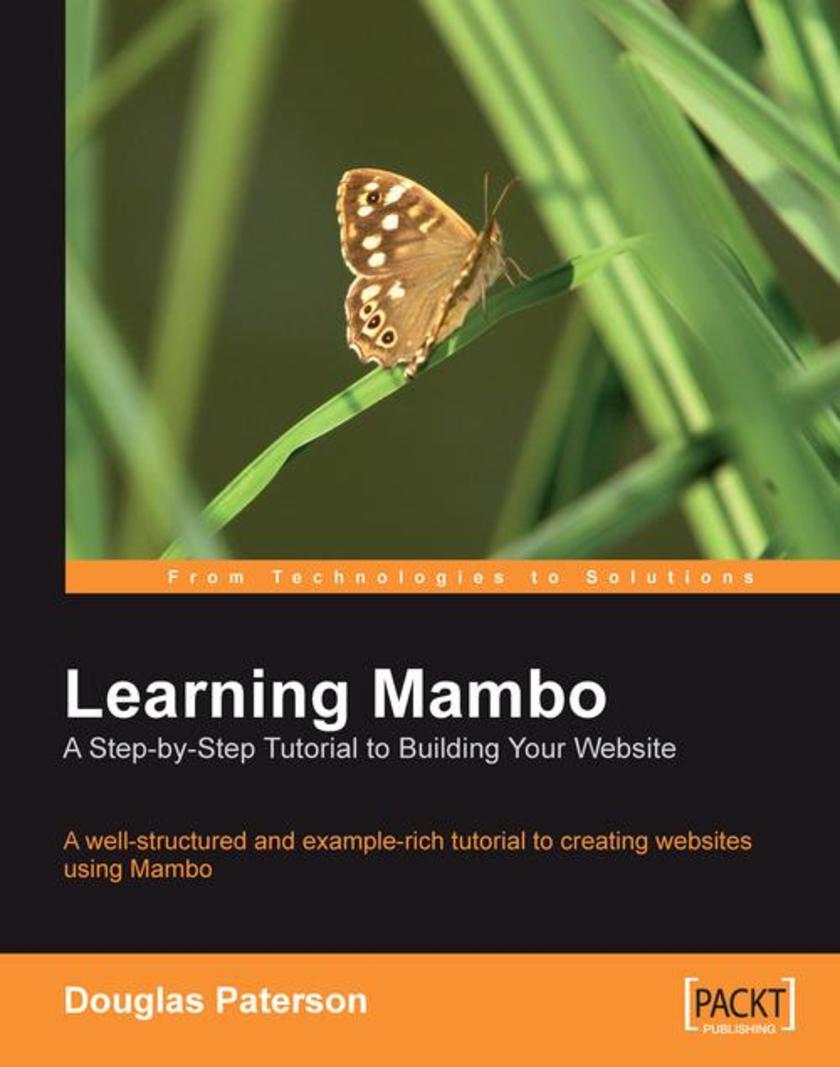
Learning Mambo: A Step-by-Step Tutorial to Building Your Website
¥80.65
Written in a clear, easy-to-read style, the book provides a tutorial for setting up a Mambo website. Each topic is tackled in a practical way with many examples and tasks to develop your skills. A realistic example website is developed incrementally through the book, showing each step in detail. This book is suitable for web developers, designers, webmasters, content editors, and marketing professionals who want develop a fully featured web presence in a simple and straightforward process. No prior knowledge of Mambo is expected, and it does not require any detailed knowledge of programming or web development. Any IT-confident individual will be able to use the book to produce an impressive website.
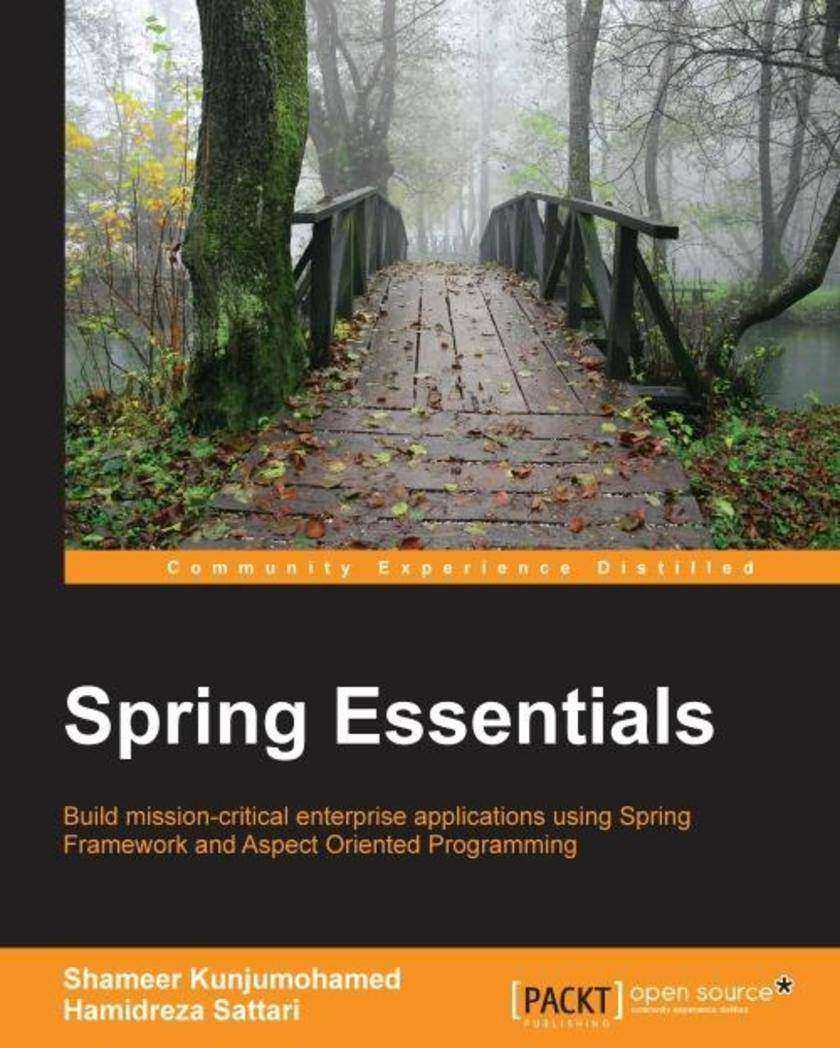
Spring Essentials
¥80.65
Build mission-critical enterprise applications using Spring Framework and Aspect Oriented ProgrammingAbout This BookStep into more advanced features of aspect-oriented programming and API components to build enterprise grade systemsBuild lightning-fast web applications and REST APIs using Spring MVC and its asynchronous processing capabilities with the view technologies of your choiceExplore simplified but powerful data access techniques including JPA (Java Persistence Architecture) repositories and NoSQL data accessWho This Book Is ForIf you are a Java developer who is looking to master Enterprise Java Development using Spring Framework, then this book is ideal for you. Prior understanding of core Java programming and a high-level understanding of Spring Framework is recommended. Having sound knowledge of servlet-based web development in Java and basic Database concepts would be an advantage but not a requirement.What You Will LearnSet up and build standalone and web-based projects using Spring Framework with Maven or GradleGet familiar with JSP Form processing using Spring and Form Tag LibraryDevelop RESTful API applications for XML and JSON data transfers with non-blocking asynchronous capabilitiesExplore Spring’s comprehensive transaction support for declarative Transaction Management and its integration with Spring’s data access abstractionsInvestigate Spring Data access mechanisms with Spring Data Repositories, a simple and consistent data-access abstractionConstruct real-time applications using WebSocket with a SockJS fallback optionUnderstand how to secure your Spring Web and standalone applications using Spring Security declaratively and consistentlyGet to grips with the end-to-end development of an API-based modern SPA using EmberJS at the front end and SpringMVC at the back endIn DetailSpring is an open source Java application development framework to build and deploy systems and applications that run on the JVM. It is the industry standard and the most popular framework among Java developers with over two-thirds of developers using it.Spring Essentials makes learning Spring so much quicker and easier with the help of illustrations and practical examples. Starting from the core concepts of features such as inversion of Control Container and BeanFactory, we move on to a detailed look at aspect-oriented programming. We cover the breadth and depth of Spring MVC, the WebSocket technology, Spring Data, and Spring Security with various authentication and authorization mechanisms.Packed with real-world examples, you’ll get an insight into utilizing the power of Spring Expression Language in your applications for higher maintainability. You’ll also develop full-duplex real-time communication channels using WebSocket and integrate Spring with web technologies such as JSF, Struts 2, and Tapestry. At the tail end, you will build a modern SPA using EmberJS at the front end and a Spring MVC-based API at the back end.By the end of the book, you will be able to develop your own dull-fledged applications with Spring.Style and approachThis book is a practical guide based on logical modules of the whole Spring Framework family, with a start-small approach, increasing in complexity as it progresses. Every chapter is an amalgamation of theory and practical examples, with further discussion on additional features and approaches.
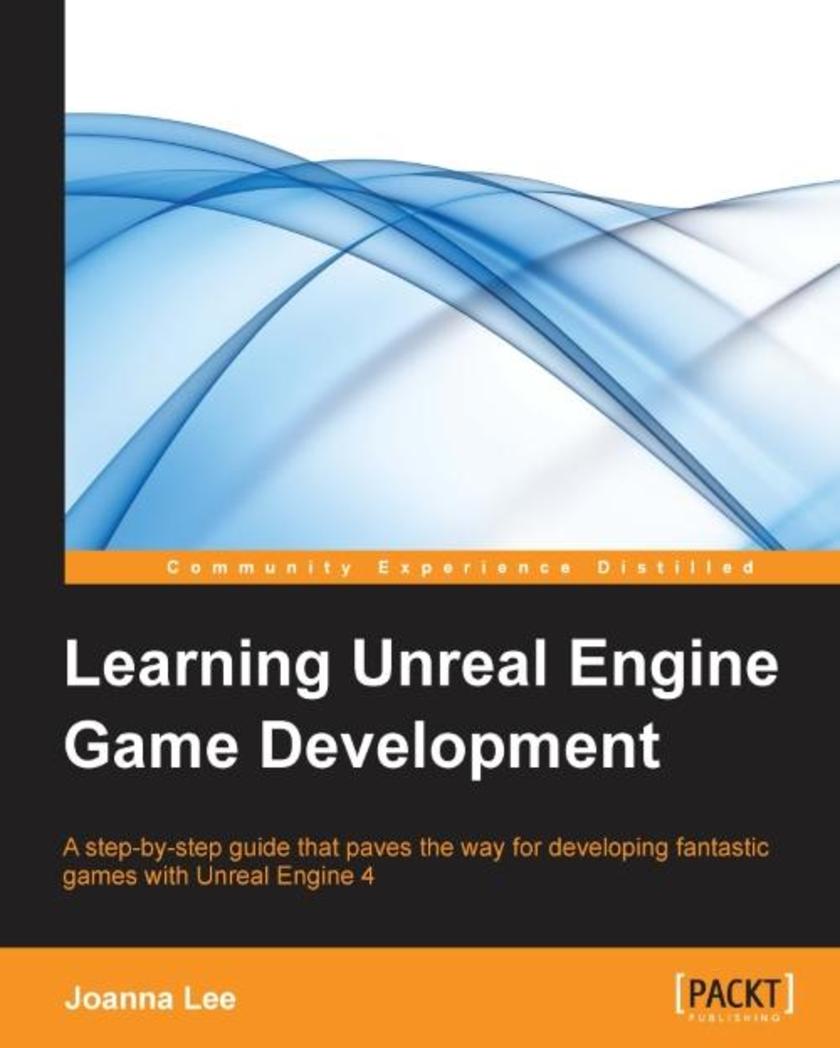
Learning Unreal Engine Game Development
¥80.65
A step-by-step guide that paves the way for developing fantastic games with Unreal Engine 4About This BookLearn about game development and the building blocks that go into creating a gameA simple tutorial for beginners to get acquainted with the Unreal Engine architectureLearn about the features and functionalities of Unreal Engine 4 and how to use them to create your own gamesWho This Book Is ForIf you are new to game development and want to learn how games are created using Unreal Engine 4, this book is the right choice for you. You do not need prior game development experience, but it is expected that you have played games before. Knowledge of C++ would prove to be useful.What You Will LearnLearn what a game engine is, the history of Unreal Engine, and how game studios create gamesExplore the Unreal Engine 4 editor controls and learn how to use the editor to create a room in a game levelUnderstand the basic structures of objects in a game, such as the differences between BSP and static meshesMake objects interactive using level blueprintsLearn more about computer graphics rendering; how materials and light are rendered in your gameGet acquainted with the Material Editor to create materials and use different types of lights in the game levelsUtilize the various editors, tools, and features such as UI, the particle system, audio, terrain manipulation, and cinematics in Unreal Engine 4 to create game levelsIn DetailUnreal Engine 4 is a powerful game development engine that provides rich functionalities to create 2D and 3D games across multiple platforms. Many people know what a game is and they play games every day, but how many of them know how to create a gameUnreal Engine technology powers hundreds of games, and thousands of individuals have built careers and companies around skills developed using this engine.Learning Unreal Engine 4 Game Development starts with small, simple game ideas and playable projects that you can actually finish. The book first teaches you the basics of using Unreal Engine to create a simple game level. Then, you'll learn how to add details such as actors, animation, effects, and so on to the game. The complexity will increase over the chapters and the examples chosen will help you learn a wide variety of game development techniques. This book aims to equip you with the confidence and skills to design and build your own games using Unreal Engine 4. By the end of this book, you'll have learnt about the entire Unreal suite and know how to successfully create fun, simple games.Style and approach This book explains in detail what goes into the development of a game, provides hands-on examples that you can follow to create the different components of a game, and provides sufficient background/theory to equip you with a solid foundation for creating your own games.
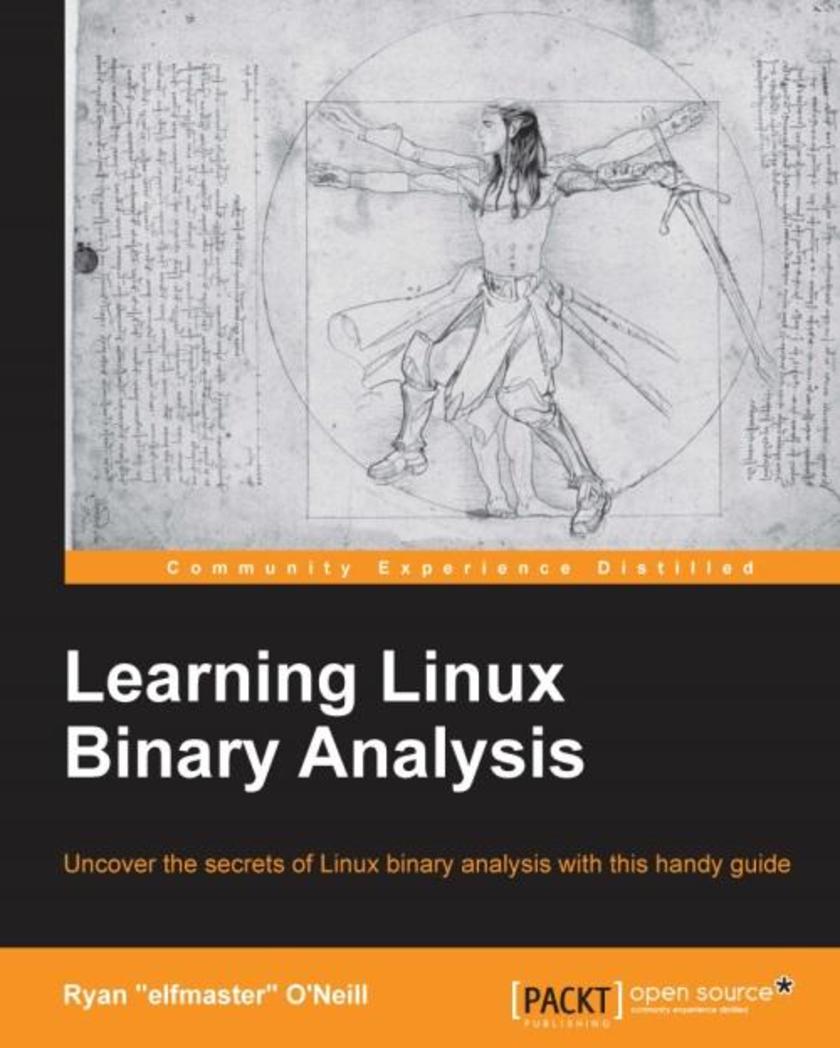
Learning Linux Binary Analysis
¥80.65
Uncover the secrets of Linux binary analysis with this handy guideAbout This BookGrasp the intricacies of the ELF binary format of UNIX and LinuxDesign tools for reverse engineering and binary forensic analysisInsights into UNIX and Linux memory infections, ELF viruses, and binary protection schemesWho This Book Is ForIf you are a software engineer or reverse engineer and want to learn more about Linux binary analysis, this book will provide you with all you need to implement solutions for binary analysis in areas of security, forensics, and antivirus. This book is great for both security enthusiasts and system level engineers. Some experience with the C programming language and the Linux command line is assumed.What You Will LearnExplore the internal workings of the ELF binary formatDiscover techniques for UNIX Virus infection and analysisWork with binary hardening and software anti-tamper methodsPatch executables and process memoryBypass anti-debugging measures used in malwarePerform advanced forensic analysis of binariesDesign ELF-related tools in the C languageLearn to operate on memory with ptraceIn DetailLearning Linux Binary Analysis is packed with knowledge and code that will teach you the inner workings of the ELF format, and the methods used by hackers and security analysts for virus analysis, binary patching, software protection and more.This book will start by taking you through UNIX/Linux object utilities, and will move on to teaching you all about the ELF specimen. You will learn about process tracing, and will explore the different types of Linux and UNIX viruses, and how you can make use of ELF Virus Technology to deal with them.The latter half of the book discusses the usage of Kprobe instrumentation for kernel hacking, code patching, and debugging. You will discover how to detect and disinfect kernel-mode rootkits, and move on to analyze static code. Finally, you will be walked through complex userspace memory infection analysis.This book will lead you into territory that is uncharted even by some experts; right into the world of the computer hacker.Style and approachThe material in this book provides detailed insight into the arcane arts of hacking, coding, reverse engineering Linux executables, and dissecting process memory. In the computer security industry these skills are priceless, and scarce. The tutorials are filled with knowledge gained through first hand experience, and are complemented with frequent examples including source code.
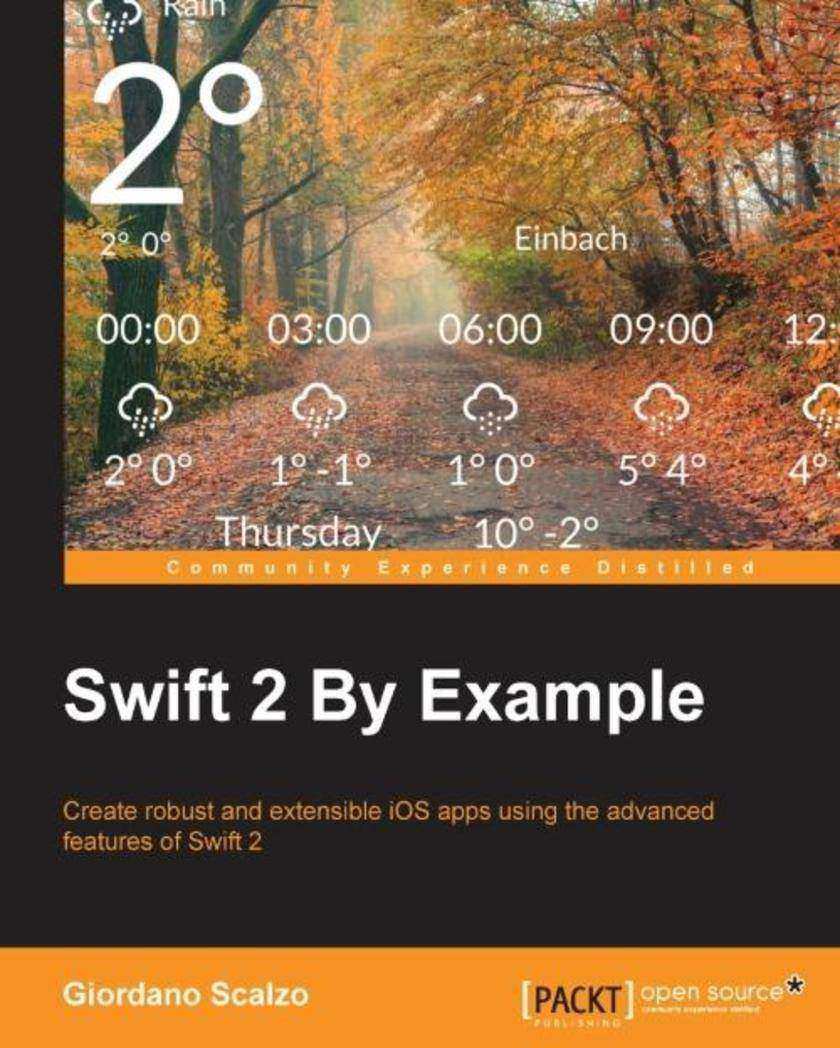
Swift 2 By Example
¥80.65
Create robust and extensible iOS apps using the advanced features of Swift 2 About This Book Get up to speed with the new features of Swift 2 by following the exhaustive examples in this book Specialize in developing real iOS apps, and 2D and 3D videogames using Swift and Cocoapods Learn how to build server API apps to feed your iOS client apps Who This Book Is For This book is ideal for those who want to learn to develop app in Swift, starting the right way. Whether you are an expert Objective-C programmer or are new to this platform, you’ll quickly grasp the code of real world apps, and discover how to use Swift effectively. Prior experience in development for Apple devices would be helpful, but is not mandatory. What You Will Learn Create a server in Swift to deliver JSON data to an iOS app Take advantage of Cocoapods to use third-party libraries Use a clean and effective architecture to decrease complexity and speed up development Take advantage of the most useful parts of the iOS SDK Build games with SpriteKit and SceneKit Develop an app running on the cloud to act as an API server for your client’s apps In Detail Swift is no longer the unripe language it was when launched by Apple at WWDC14, now it’s a powerful and ready-for-production programming language that has empowered most new released apps. Swift is a user-friendly language with a smooth learning curve; it is safe, robust, and really flexible. Swift 2 is more powerful than ever; it introduces new ways to solve old problems, more robust error handling, and a new programming paradigm that favours composition over inheritance. Swift 2 by Example is a fast-paced, practical guide to help you learn how to develop iOS apps using Swift. Through the development of seven different iOS apps and one server app, you’ll find out how to use either the right feature of the language or the right tool to solve a given problem. We begin by introducing you to the latest features of Swift 2, further kick-starting your app development journey by building a guessing game app, followed by a memory game. It doesn’t end there, with a few more apps in store for you: a to-do list, a beautiful weather app, two games: Flappy Swift and Cube Runner, and finally an ecommerce app to top everything off. By the end of the book, you’ll be able to build well-designed apps, effectively use AutoLayout, develop videogames, and build server apps. Style and approach These easy-to-follow tutorials show you how to build real-world apps. The difficulty and complexity level increases chapter by chapter. Each chapter is dedicated to build a new app, beginning from a basic and unstyled app through to a full 3D game. The last two chapters show you how to build a complete client-server ecommerce app right from scratch.
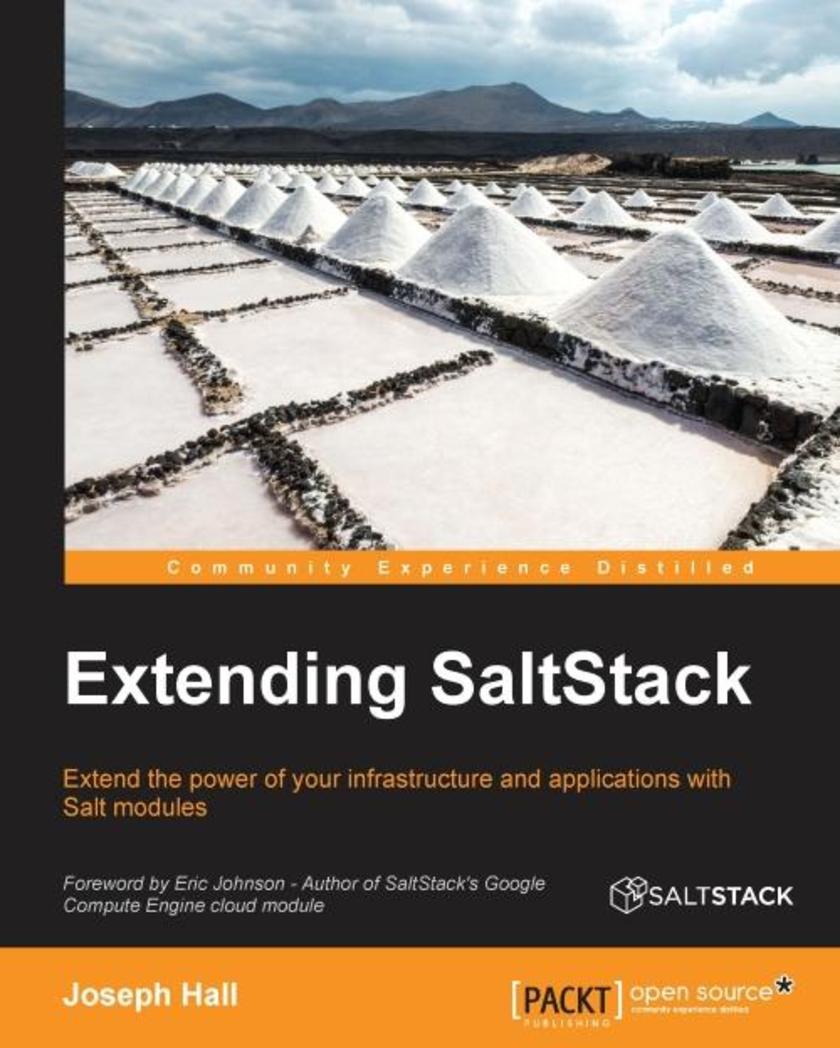
Extending SaltStack
¥80.65
Extend the power of your infrastructure and applications with Salt modules About This Book Get the most up-to-date practical resource on writing new Salt modules and extending Salt Learn through use cases and encounter both commonly-used modules as well as advanced ones Effectively troubleshoot problems and hiccups encountered while building and putting modules to work Who This Book Is For This book is for both new and existing Salt developers who are looking to build and write new Salt modules. Some prior Python development experience is expected. What You Will Learn Understand the working of Salt's Loader system Write several of the most common types of Salt modules Interact between different kinds of modules and build new ones Submit open source modules upstream to the Salt project Make Salt interact with third-party services and applications In Detail Salt already ships with a very powerful set of tools, but that doesn't mean that they all suit your needs perfectly. By adding your own modules and enhancing existing ones, you can bring the functionality that you need to increase your productivity. Extending SaltStack follows a tutorial-based approach to explain different types of modules, from fundamentals to complete and full-functioning modules. Starting with the Loader system that drives Salt, this book will guide you through the most common types of modules. First you will learn how to write execution modules. Then you will extend the configuration using the grain, pillar, and SDB modules. Next up will be state modules and then the renderers that can be used with them. This will be followed with returner and output modules, which increase your options to manage return data. After that, there will be modules for external file servers, clouds, beacons, and finally external authentication and wheel modules to manage the master. With this guide in hand, you will be prepared to create, troubleshoot, and manage the most common types of Salt modules and take your infrastructure to new heights! Style and approach This book follows a step-by-step tutorial-based approach explaining the different types of modules, from fundamentals to complete and full-functioning modules.
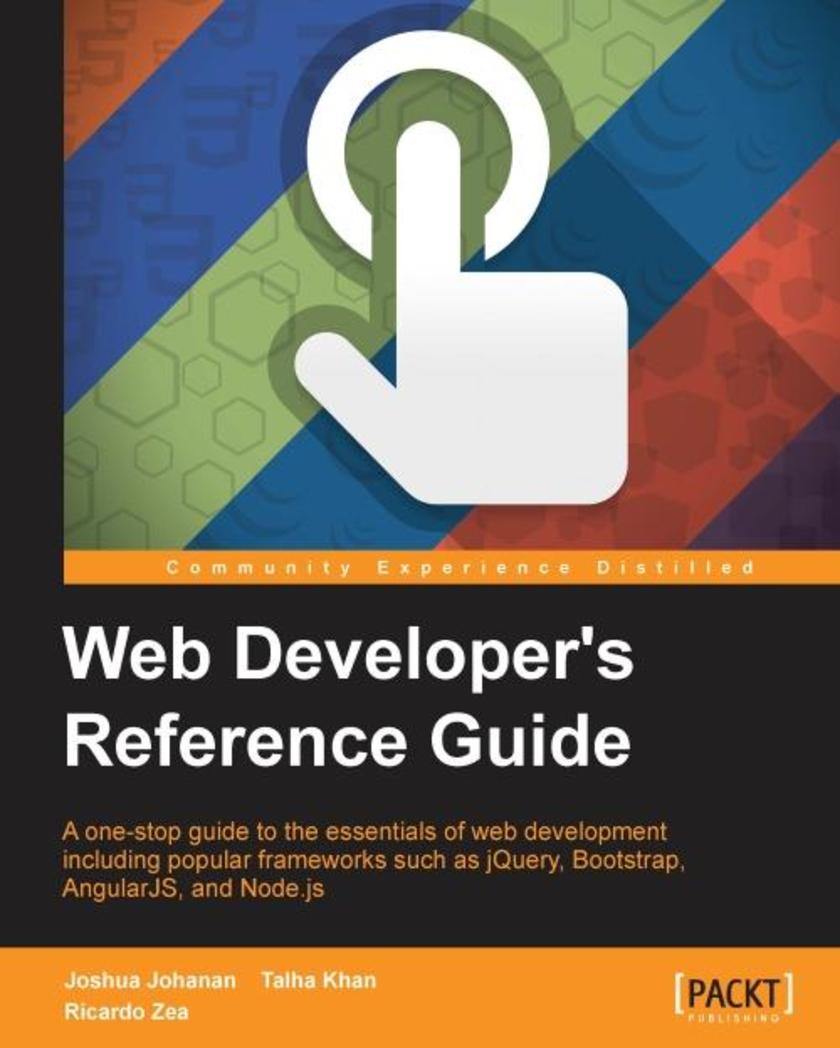
Web Developer's Reference Guide
¥80.65
A one-stop guide to the essentials of web development including popular frameworks such as jQuery, Bootstrap, AngularJS, and Node.js About This Book Understand the essential elements of HTML, CSS, and JavaScript, including how and when to use them Walk through three of the best and most popular web development frameworks – jQuery, Bootstrap, and AngularJS References for any function you will need in your day-to-day web development Who This Book Is For This book is perfect for beginners but more advanced web developers will also benefit. Laid out so you can refer to as much or as little as you need to, with this book you can exhaustively explore essential concepts for modern web developers. What You Will Learn Explore detailed explanations of all the major HTML elements and attributes, illustrated with examples Take a deep dive into CSS properties and functions and master their usage Find clear, concise de*ions of JavaScript syntax and expressions Recognize various JavaScript design patterns and learn the basics of JavaScript object-orientated programming Implement the latest ECMAScript 6 for client-side *ing in your web applications Discover new ways to develop your website's front end quickly and easily using Bootstrap Write JavaScript extensibly using jQuery-JavaScript's feature-rich library Delve into the key Node.js modules used in JavaScript server-side programming Access AngularJS 's important modules, controllers, directives, and services quickly In Detail This comprehensive reference guide takes you through each topic in web development and highlights the most popular and important elements of each area. Starting with HTML, you will learn key elements and attributes and how they relate to each other. Next, you will explore CSS pseudo-classes and pseudo-elements, followed by CSS properties and functions. This will introduce you to many powerful and new selectors. You will then move on to JavaScript. This section will not just introduce functions, but will provide you with an entire reference for the language and paradigms. You will discover more about three of the most popular frameworks today—Bootstrap, which builds on CSS, jQuery which builds on JavaScript, and AngularJS, which also builds on JavaScript. Finally, you will take a walk-through Node.js, which is a server-side framework that allows you to write programs in JavaScript. Style and approach This book is an easy-to-follow, comprehensive reference guide. Each topic, function, or element is listed methodically along with parameters, return values, and de*ions. Examples are also included to help you put the concepts to use quickly in the real world.
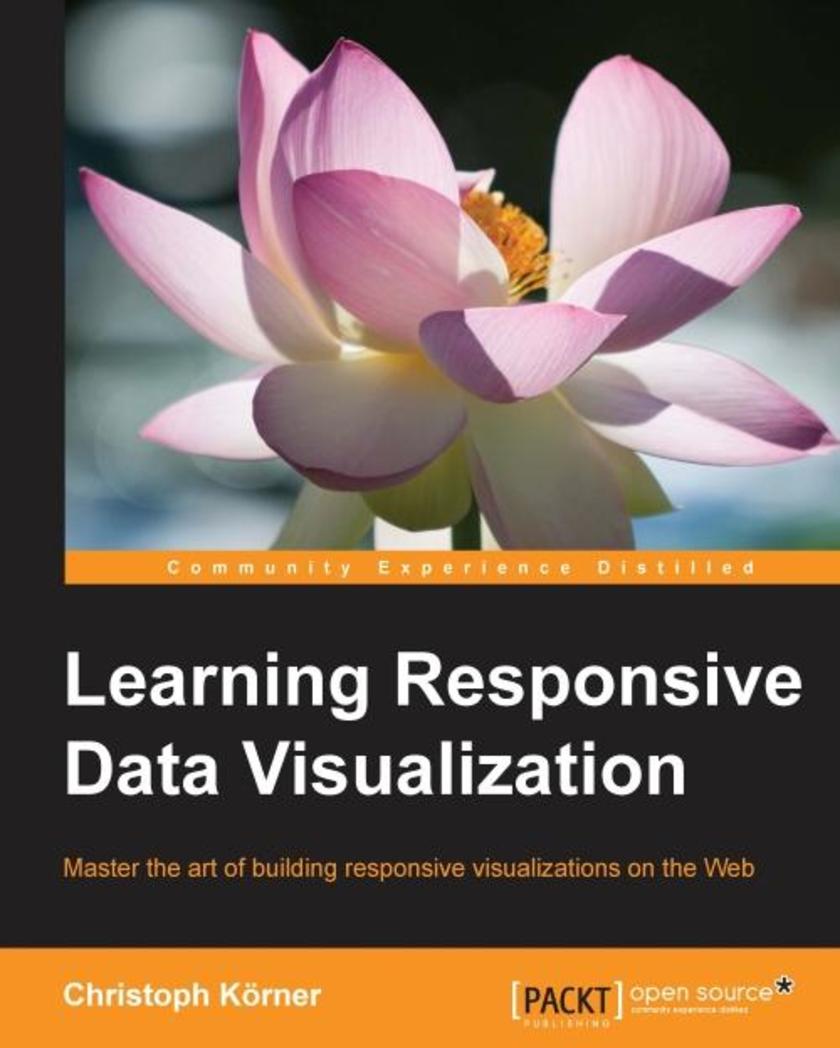
Learning Responsive Data Visualization
¥80.65
Master the art of building responsive visualizations on the Web About This Book Learn the techniques for building data visualizations that work well for all screen sizes Implement responsive techniques with popular libraries to get to grips with building responsive visualizations that work in the real world Incorporate responsive workflow in your data visualization process to build visualizations that take a mobile-first approach. Who This Book Is For Web developers and data science professionals who want to make their visualizations work for smaller screen sizes. Some basic knowledge of JavaScript and Data visualization is expected. What You Will Learn Get familiar with responsive design for data visualizations Understand the main concepts of D3.js to create interactive visualizations Unleash the power of Bootstrap to create stunning and responsive visualizations for all screen resolutions Implement Touch and Mouse interactions for mobile-first applications Design Transitions and Animations that impress in portrait and landscape Build a Responsive World Map using GeoJSON and D3.js In Detail Using D3.js and Responsive Design principles, you will not just be able to implement visualizations that look and feel awesome across all devices and screen resolutions, but you will also boost your productivity and reduce development time by making use of Bootstrap—the most popular framework for developing responsive web applications. This book teaches the basics of scalable vector graphics (SVG), D3.js, and Bootstrap while focusing on Responsive Design as well as mobile-first visualizations; the reader will start by discovering Bootstrap and how it can be used for creating responsive applications, and then implement a basic bar chart in D3.js. You will learn about loading, parsing, and filtering data in JavaScript and then dive into creating a responsive visualization by using Media Queries, responsive interactions for Mobile and Desktop devices, and transitions to bring the visualization to life. In the following chapters, we build a fully responsive interactive map to display geographic data using GeoJSON and set up integration testing with Protractor to test the application across real devices using a mobile API gateway such as AWS Device Farm. You will finish the journey by discovering the caveats of mobile-first applications and learn how to master cross-browser complications. Style and approach As the world shifts to mobile devices for consuming data on the Web, developers are faced with the unique challenge of making data visualizations work for their smaller screens. The growth of responsive web design enabled developers to adopt page layouts and media for smaller screens, but there is still little information available on how to adapt data visualizations for the smaller screens. This book fills this important gap and shows how responsive web design principles can be extended to create visualizations that work well regardless of the screen size, thereby allowing developers to build user-friendly visualizations that work well on all devices. In addition to covering some of the popular techniques and design patterns for building responsive visualizations, the book also shows readers how to implement these techniques with the help of some popular tools and libraries.
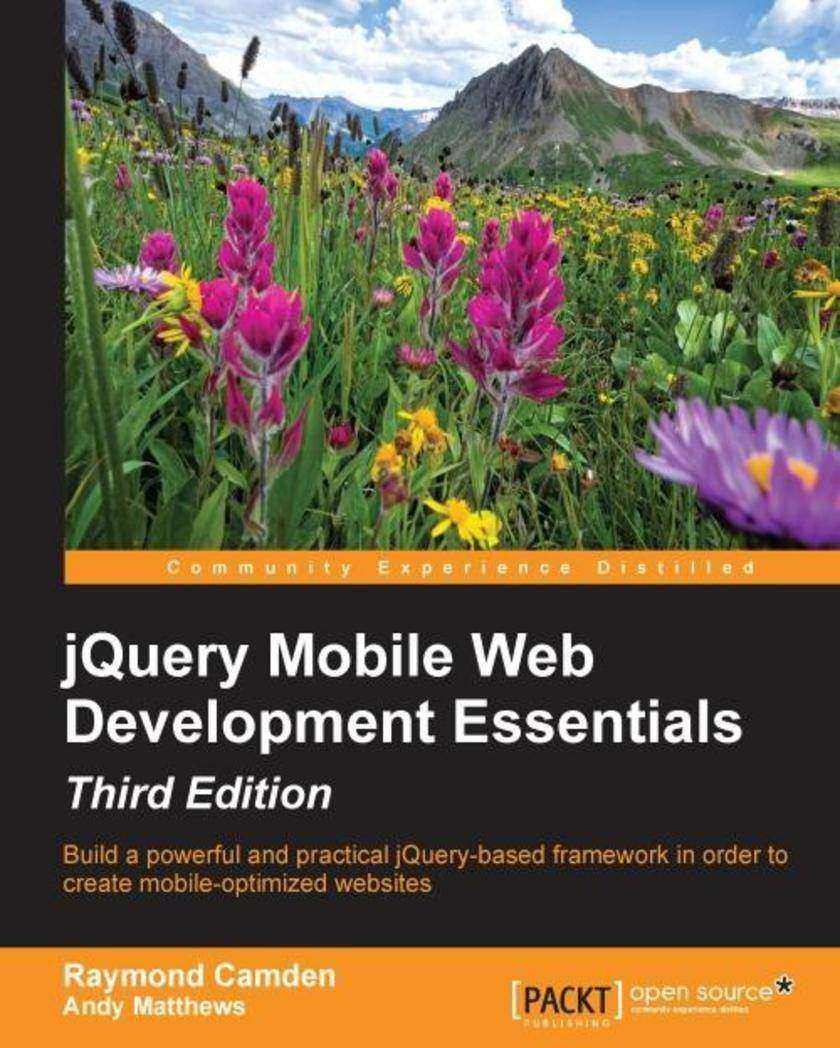
jQuery Mobile Web Development Essentials - Third Edition
¥80.65
Build a powerful and practical jQuery-based framework in order to create mobile-optimized websites About This Book Build websites with jQuery Mobile that work beautifully across a wide range of mobile devices Become a competent jQuery Mobile developer and learn the building blocks of jQuery Mobile’s component-driven design This book covers key concepts but with a focus on providing the practical skills required Who This Book Is For This book is for any web developer who is looking to create mobile-optimized websites. Basic knowledge of HTML is required. Minor familiarity with JavaScript would help but is not required. What You Will Learn Create mobile-optimized sites using simple HTML Structure your sites so users can browse them on mobile devices Find out how to work with multiple pages in the JQM framework and embed multiple pages in HTML files Enhance simple pages using various toolbars Include mobile-optimized forms for interactive sites Convert desktop sites into mobile versions Use HTML5’s local storage feature in jQuery Mobile to include persistent client-side storage Explore the rich sets of widgets and themes available and discover how to modify them for use in your jQuery Mobile site In Detail jQuery Mobile is a HTML5-based touch-optimized web framework. jQuery Mobile can be used to build responsive cross-platform websites and apps for a wide range of smartphones, tablets, and desktop devices. The jQuery Mobile framework can be integrated with other mobile app frameworks such as PhoneGap, IBM Worklight, and more. Introduction to jQuery Mobile explains how to add the framework to your HTML pages to create rich, mobile-optimized web pages with minimal effort. You’ll learn how to use jQuery Mobile’s automatic enhancements and configure the framework for customized, powerful mobile-friendly websites. We then dig into forms, events, and styling. You'll see how jQuery Mobile automatically enhances content, and will find out how to use the JavaScript API to build complex sites. We’ll introduce you to how jQuery Mobile can be themed as well looking into how JavaScript can be used for deep sets of customizations. The examples are ready to run and can be used to help kick-start your own site. Along the way, you will leverage all the concepts you learn to build three sample mobile applications. Style and approach Through a set of easy to follow instructions, we’ll show you how to use jQuery Mobile’s features one easy-to-use widget at a time. You’ll see examples for each feature as well as screenshots to demonstrate what they should look like on a mobile device. You can then take these example files and modify them as you learn to experiment.
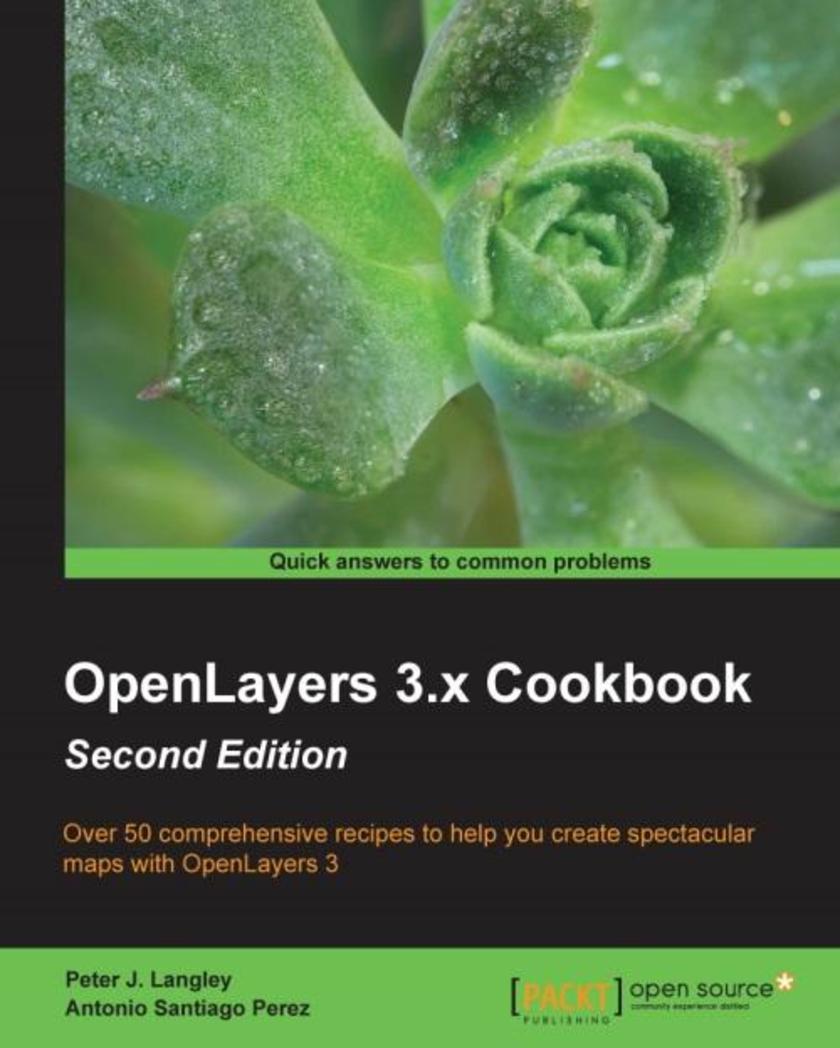
OpenLayers 3.x Cookbook - Second Edition
¥80.65
Over 50 comprehensive recipes to help you create spectacular maps with OpenLayers 3 About This Book Create highly customized mapping apps for the web with rich interactivity and diverse content using JavaScript See how successful mapping apps work and how they integrate with third-party services Packed full of code examples, screenshots, and explanations from professionals in the industry Who This Book Is For If you are a GIS-related professional with basic knowledge of web technologies and want to gain in-depth knowledge of creating web mapping applications, then this book is for you. The recipes will be appropriately mixed to suit JavaScript beginners or experts and cover basic to advanced topics on OpenLayers. What You Will Learn Create stunning maps, and understand projection. Add customized raster and vector layers Work with important tile providers Work with OGCs, WMS, and WFS compliant servers Read/write features from/to different data sources Style features to improve their visualization Understand events and work with the main controls Enhance maps with HTML5 technologies such as Geolocation In Detail Data visualization and analytics has become an important task across all technology-based industries. OpenLayers 3,is one of the most important and complete open source JavaScript mapping libraries today. Throughout this book, you will go through recipes that expose various features of OpenLayers 3, allowing you to gain an insight into building complex GIS web applications. You’ll get to grips with the basics of creating a map with common functionality and quickly advance to more complicated solutions that address modern challenges. You will explore into maps, raster and vector layers and styling in-depth. This book also includes problem solving and how-to recipes for the most common and important tasks. The range of recipes includes: creating basic maps, working with raster and vector layers, understanding events,working with the main controls, reading features from different data sources, styling features, and understanding the underlying architecture. It will also cover solutions and optimizations to challenges commonly faced in modern applications. Style and approach This book teaches you how to create stunning maps that are highly interactive and visually appealing with the help of 50 handpicked recipes. Each recipe will address your need to visualize data on a map. Just follow the steps in the recipes to create maps of your choice in no time.




 购物车
购物车 个人中心
个人中心



